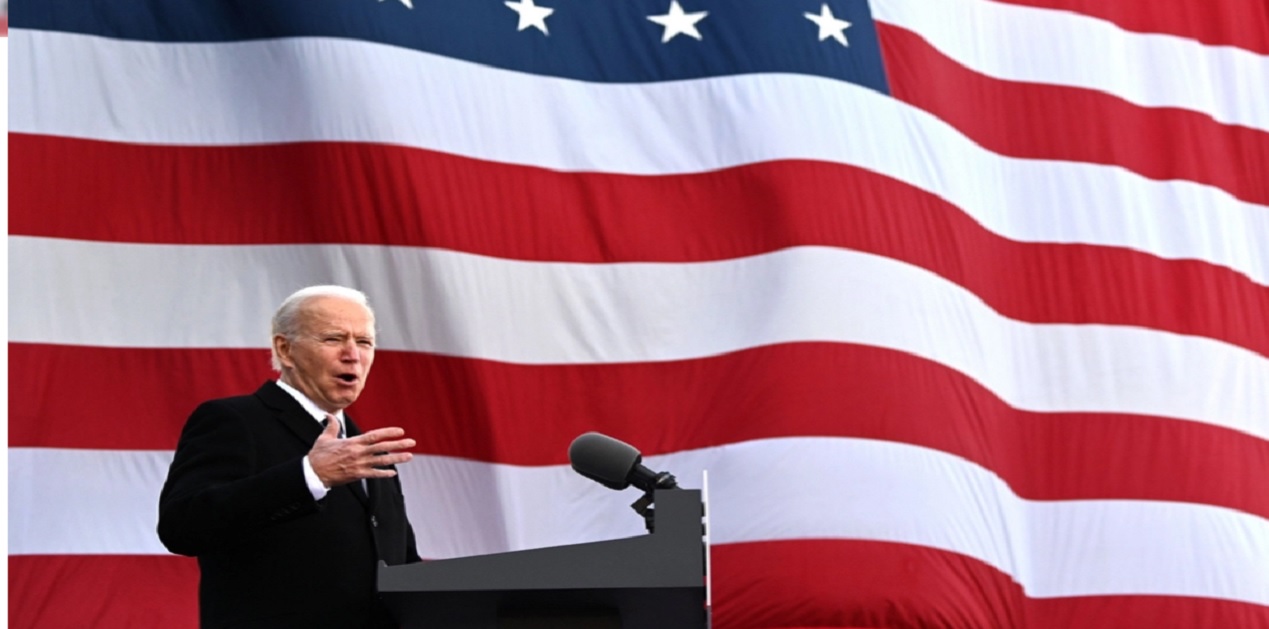The US has come out with an Interim National Security Strategic Guidance on 03 March 2021 that will not only form the basis for Biden administration’s National Security Strategy but also would find its reflection in the forthcoming US Budget and especially so in the allocations for the Defence Budget. Biden has reiterated his commitment to engage with the world instead of following isolationist policies like the previous President and has promised to secure American interests by working with allies and partners; he has also laid great stress on democracy being an ‘enduring source of national strength’ which can meet challenges of the evolving world. Improving economy, modernising the military, reclaiming America’s place in international institutions and reinvigorating America’s alliances’ network and partnerships have been underlined as key elements in the emerging National Security Strategy under the Biden-Harris administration. Moreover, coming out with such a document so early in his tenure also indicates Biden administration’s earnestness in dealing with foreign and security policies that seem to have gone somewhat astray during the Trump era.
China and Russia are the focus of attention in the over two dozen pages of the Interim NSS Guidance; China has been called an ‘assertive’ power and Russia as a ‘destablising’ power. While China has been mentioned 15 times Russia finds mention 5 times thus indicating China as the dominant player that challenges America’s world view as well as the current international order. Of course, Iran and North Korea are also seen as threatening the regional order and US allies and partners. Additionally, technology revolution including artificial intelligence, quantum computing, biotechnology and 5G infrastructure etc are seen as factors that could impact the economic and military balance between the countries.
Conforming to what Biden and his team has articulated earlier the Guidance promises to ‘hold countries like China to account’ through forging a unified front involving America’s alliances’ countries and partners; modernizing and investing in NATO will also be a priority. Further, diplomacy would be the preferred option rather than using the military to secure America’s interests. In contrast, Trump’s National Security Strategy of 2017 had emphasised on ‘preserving peace through strength’. Therefore, Biden’s formulation is being viewed as somewhat of a softer option being especially when China has been very aggressive in the East China Sea, South China Sea and along the Indian borders of Eastern Ladakh that involves not only America’s allies but also its partners in the Indo-Pacific construct. However, modernising military to suit the current and emerging security environment with a view to ‘gain a decisive American advantage’ has also been stressed upon. How far the Biden administration will go to upgrade America’s military capabilities, as mentioned earlier, would be seen in the defence appropriations of this year’s national budget.
Nevertheless, overall objective is to move away from old legacy weapon systems and platforms and generate resources for acquiring cutting edge technologies to retain military advantage on the battlefield. Biden also sees no merit in getting involved in ‘forever wars’ for instance the ongoing Afghan War which has been extremely costly both in lives and treasure. But then he has somewhat a narrow perspective when he says that he does not want Afghanistan to become a haven for terrorists from where they can carry out attacks against the US. What about if terror attacks are carried out against partners like India? Further, how will he get America out of Afghan War without creating more problems for the region remains to be seen? It would certainly test his diplomatic and strategic skills.
Nuclear weapons, non proliferation and arms control and heading off arms race also find a mention in the document and it cites the recent extension of the New START Treaty with Russia as a positive step. China has been continually modernising and adding to its nuclear and missile arsenals which again complicate the strategic stability regime. Dealing with such issues indeed would be an arduous task.
On the question of Indo-Pacific Biden’s Guidance underlines his administration’s resolve to strengthen partnerships with India, ASEAN, Vietnam, Singapore, New Zealand as well as Pacific Islands to advance shared interests. He seeks to maintain a robust presence in the Indo-Pacific while at the same time working with his European allies and for this he will carry out a Global Posture Review. As a manifestation of Biden’s policy and efforts towards Indo-Pacific, the US Defence Secretary will not only be visiting India this month but also some of the other Indo-Pacific countries to enhance bilateral defence and security relationships. There are also some media reports indicating that a virtual Quad Summit could take place as early as this month. This would be a progressive step as Quad Foreign Ministers have met twice i.e. in September 2019 and October 2020. Quad is premised on shared values and interests one of which is democracy.
On the question of democratic credentials India is more likely to face some headwinds from the Democrats who are part of many groups and lobbies that revel in castigating India in a variety of ways on the nature of its democracy. Recently, Freedom House, an American organisation doing research on democratic values etc has lowered India’s ranking from ‘Free’ to ‘Partly Free’ in their report of 2021 based on their own interpretation of a number of factors and recent events in India. As hitherto before India will need to remain alert regarding activities of such elements that usually gain more traction during the reigns of American Democrats’ dispensations.
The document has also outlined the need for reforms in the international system with which India could not but agree more. India has been advocating for reforms at the UN but it is difficult to say how such reforms will pan out. Reversing many of the Trump era’s policies Biden’s strategy guidance aims to take back America’s leadership position in several international institutions and multilateral organisations. To mitigate the impact of Covid-19 and other such pandemics he aims to lead at the WHO for reforming and strengthening the organisation.
Finally, the document is a blue print for the NSS which would be an expanded and much more refined version and which is expected to be released early this year. The NSS would further lead to evolving a US National Defence Strategy and thereafter a National Military Strategy. Question that is always asked in India when such American documents are released is where is India’s NSS? Several years ago the Government had promised in the Parliament that India’s NSS was being formulated and would be released soon. Fructification of India’s NSS is still awaited.
(The paper is the author’s individual scholastic articulation. The author certifies that the article/paper is original in content, unpublished and it has not been submitted for publication/web upload elsewhere, and that the facts and figures quoted are duly referenced, as needed, and are believed to be correct). (The paper does not necessarily represent the organisational stance... More >>
Image Source: https://economictimes.indiatimes.com/











Post new comment